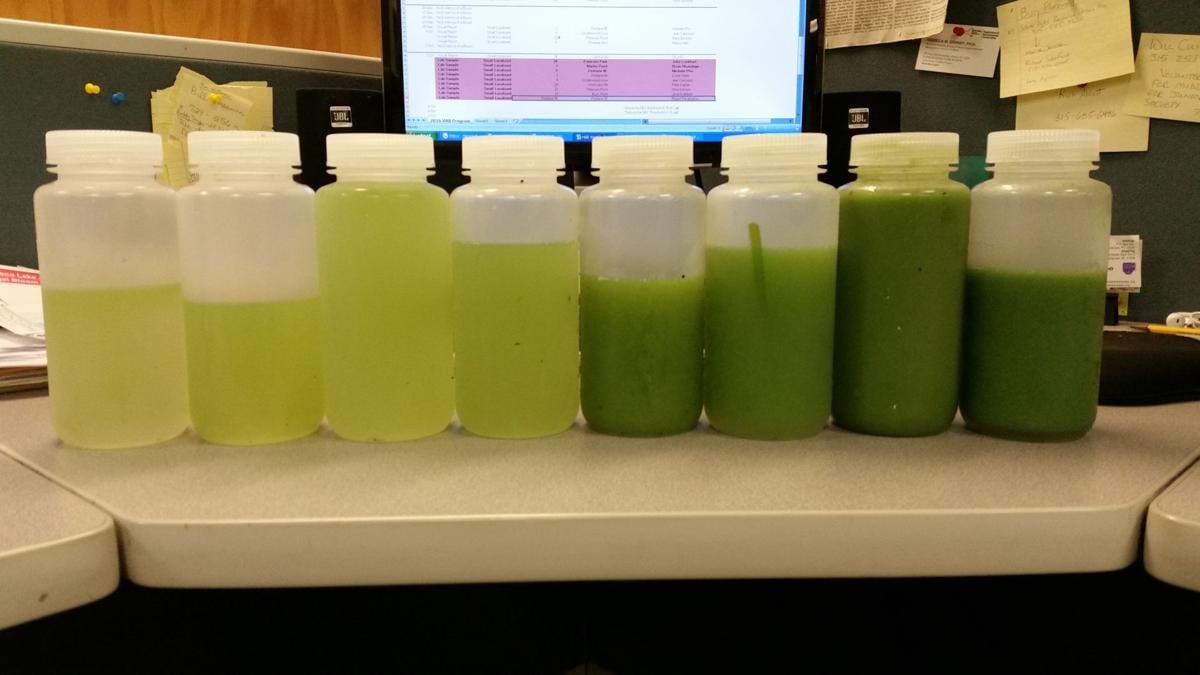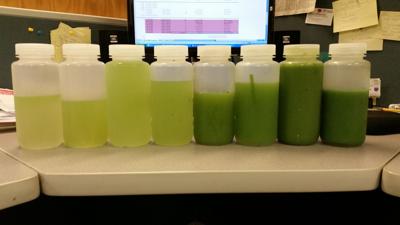The state Department of Health says its laboratory will be ready next summer for testing Owasco Lake drinking water samples for blue-green algae toxins.
During the monthly Cayuga County Board of Health meeting on Tuesday, state officials from the Department of Health and the state Department of Environmental Conservation discussed the future of water testing at the Wadsworth Center in Albany, said county Environmental Health Director Eileen O'Connor. In an interview with Ë®ąűĹÉAV on Wednesday, O'Connor said there were concerns expressed about whether the lab could handle daily testing of microcystin, the toxin that can be released from dying cyanobacteria blooms. Those toxins had appeared at low levels in the town of Owasco's and city of Auburn's treated drinking water last summer.
With blue-green algae becoming a widespread issue in the Finger Lakes region and beyond, there is the growing possibility for needing to test more public water systems in the region. O'Connor said that at the Tuesday meeting, state officials felt confident that they would be able to complete daily testing this coming year, and explained that the lab had purchased new analyzing equipment to help meet the demand.
People are also reading…
A spokesperson for the Department of Health verified Friday that equipment has been ordered to help automate parts and increase lab capacity for analysis.Â
Kathleen Cuddy, director of the county health department, said Friday that some board of health members asked state officials if there could be another lab branch based in the area for microcystin testing in order to cut back on the travel time for delivering the samples collected from the water treatment plants. Last summer, county health department staff either overnight shipped samples to Albany, or drove them there in order to get results within 24 hours. Currently the Wadsworth Center is the only lab, outside of academic labs, in the state with a daily turnaround time for testing the toxin, which at certain levels can cause liver failure, gastrointestinal issues and other adverse health effects.
During the end of September and early October, the state's lab and county health staff worked together daily on testing for microcystin. Cuddy said the individuals able to test for the toxin worked seven days per week for several weeks in a row in order to get results back to the county.
"We're greatly reliant on a couple of people who work in this particular lab," she said.
DOH said it "is constantly responding to up-to-the-minute demands for priority testing," but it did not indicate that it was considering hiring more staff dedicated for microcystin testing. A spokesperson said that the analysis requires highly skilled scientists with the technical proficiency in drawing conclusions from the data. Cuddy said that at the meeting she did not get the impression that the state would look into another lab in the region.
Lloyd Wilson, a scientist with the DOH's Bureau of Water Protection, said the state will continue to test on a daily basis if it is needed. He said the state proved it could do daily testing last fall, and this year will be no different.
"The lab capacity issue has been discussed at the highest levels," Wilson said. "We need to have the capacity for whatever is thrown at us. We'll be there. We have sampled systems throughout the state for several years, not just last year. The difference last year was daily testing for such an extended period of time.Â
"If the county is willing to collect the samples every day, we're willing to sample them," he added.
The state Department of Health also cited the $2 million the state has pledged toward design, engineering and construction of upgrades to the city of Auburn and town of Owasco's water treatment systems. While the state will continue to provide testing as needed, the hope is those plant upgrades will diminish the need for daily testing.
Staff writer Gwendolyn Craig can be reached at (315) 282-2237 or gwendolyn.craig@lee.net. Follow her on Twitter @gwendolynnn1.

























